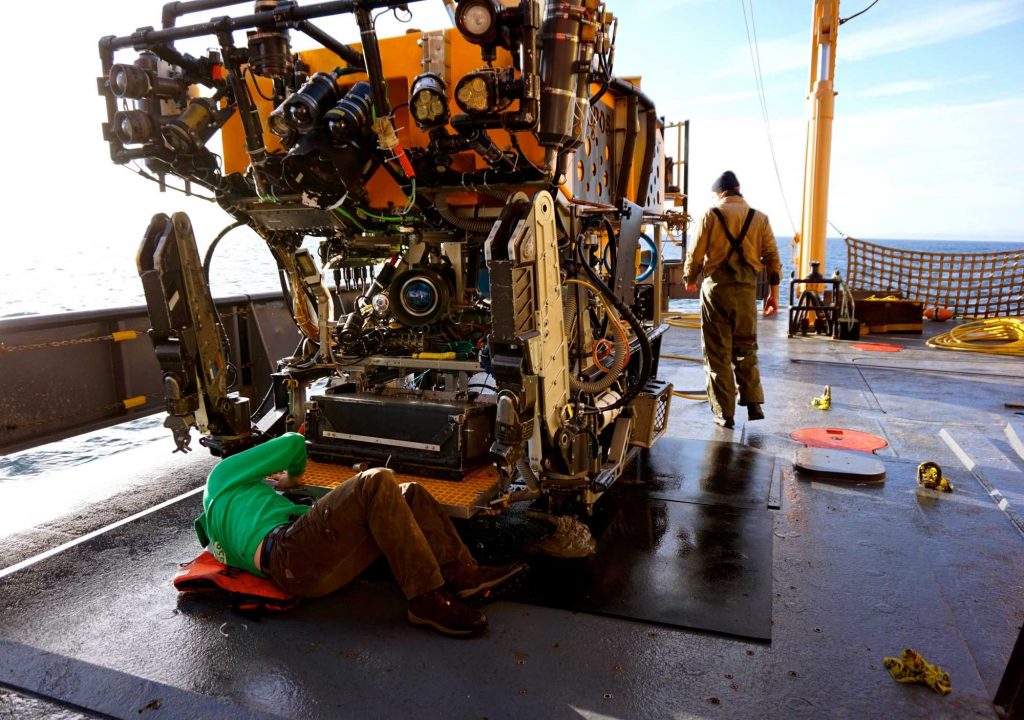Eye spy with my underwater eye!
Award: Semi-finalist Prize, Images of Research Competition 2017
| Submitted by: | Lauren Law |
| Faculty/Department: | Biological Sciences |
| Place of creation: | Hecate Strait, British Columbia |
Glass sponge reefs in Hecate Strait, British Columbia are threatened by trawling and oil/gas exploration. The reefs are ancient, dated at 9,000 years old, and represent modern analogues of extinct reefs that once existed during the Jurassic period. Given their rarity and vulnerability to damage, the Canadian government is establishing the reefs as a marine protected area, but our ability to monitor the reefs is hindered by a lack of baseline data. To study the reefs at depths greater than 160 meters, we use a remotely operated vehicle (ROV) as seen in this image. The ROV serves as our “third eye” underwater and is used to survey the reefs along photographic transects. I quantify areas of live and dead sponge cover from the ROV images to map the reef’s distribution. I also measure biota living on and off the reef to study species assemblages on sponge cover. Dead glass sponge hosts numerous cryptic species, including a potential new species of Desmacella – a thin encrusting sponge. These data provide indicators of reef health and will be used to inform the Department of Fisheries and Oceans as they develop management strategies for protecting Canada’s unique glass sponge reefs.


